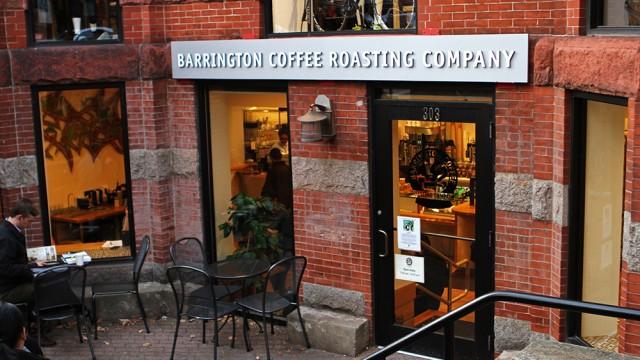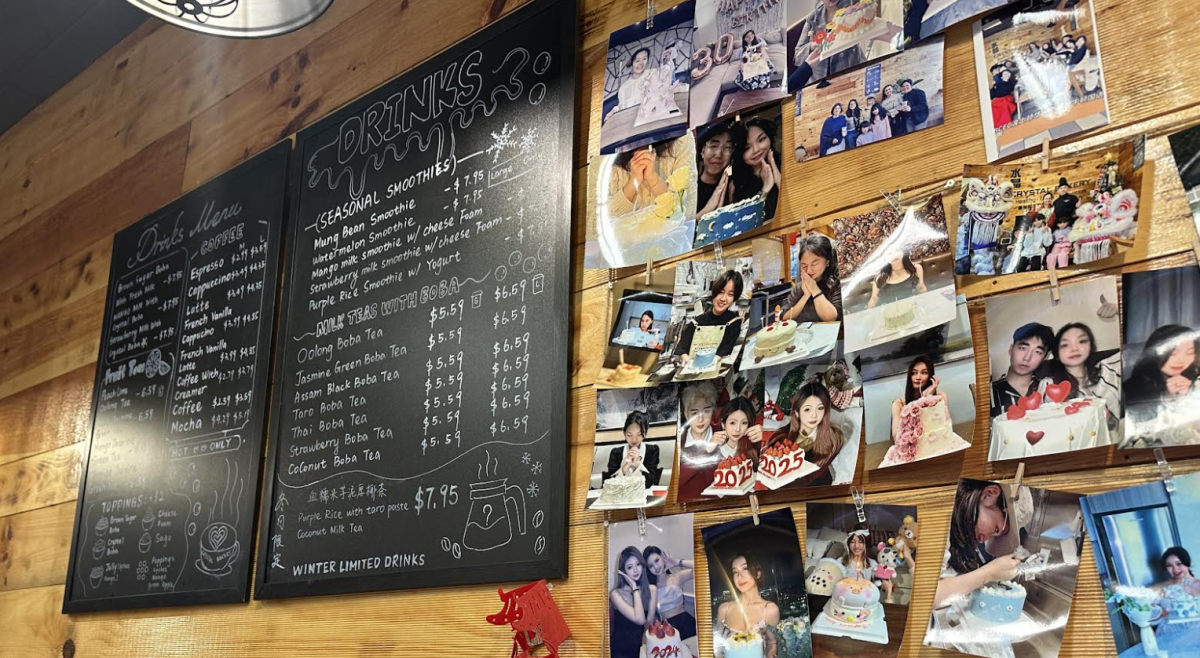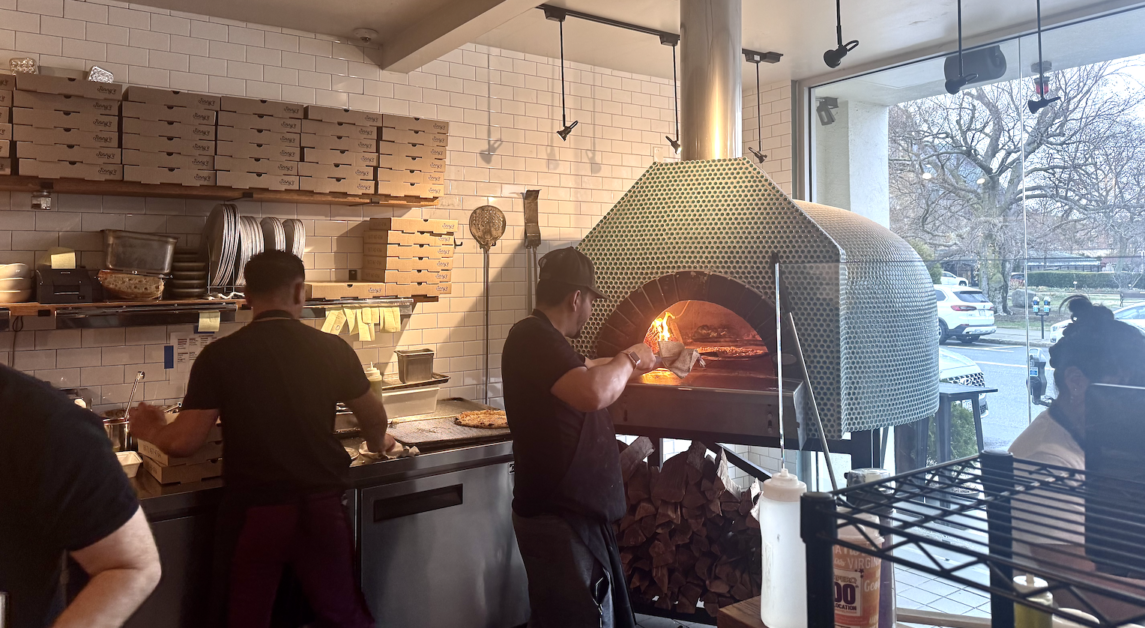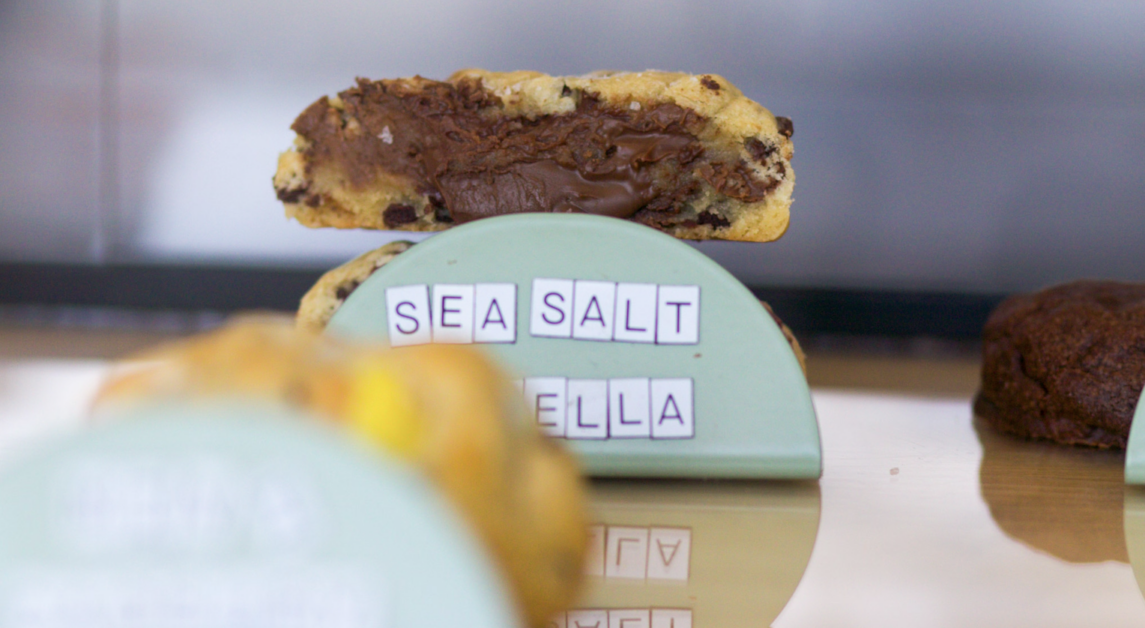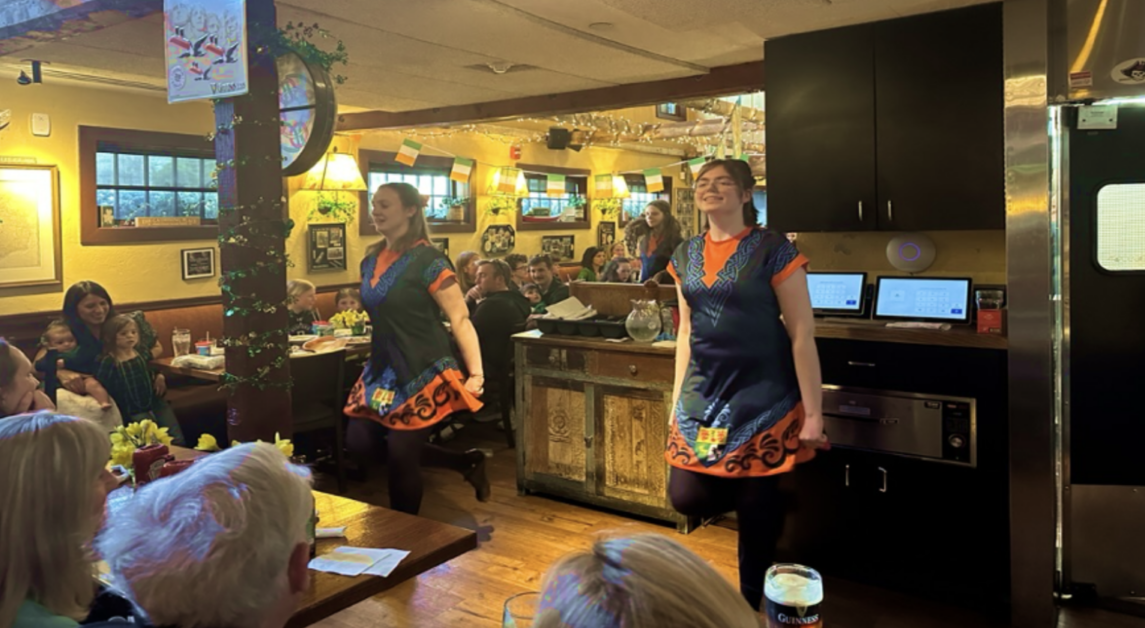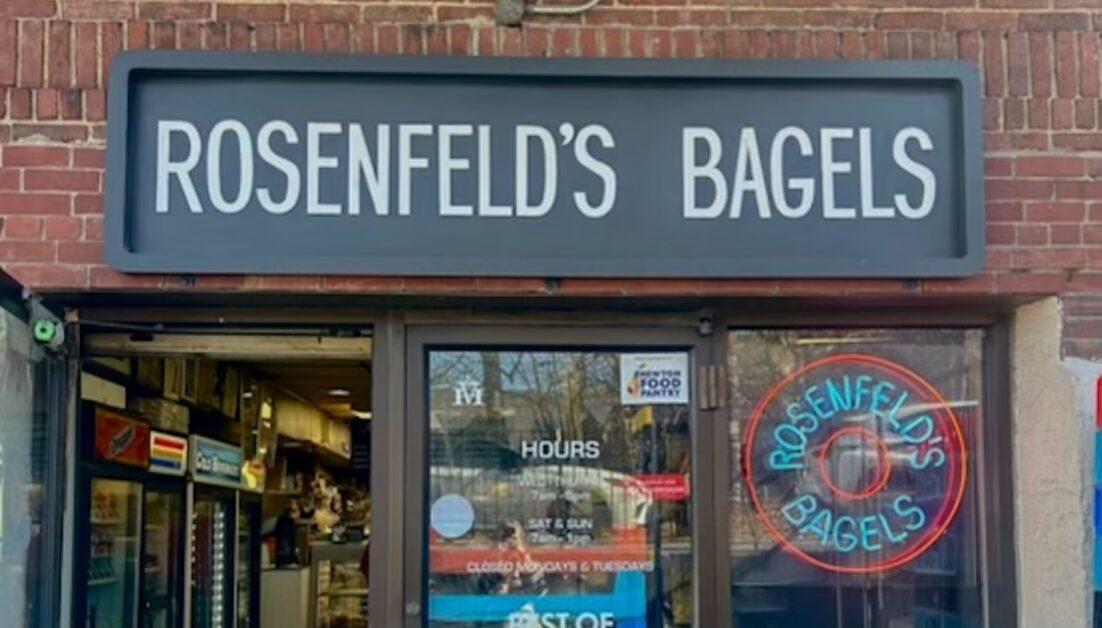I have been to Barrington several times since it opened last December, but I’ve never ordered a cup of coffee made this way, called a Steampunk machine. It looks intimidating. The machine, the manager of the shop tells me, is likely the only one in Boston.
Any barista using it to make a cup of coffee turns into a mad scientist. The manager, Teegan Jansen, poked at a tablet screen as steam billowed in the tubes in front of her. I stand back.
“It’s a thing to watch,” she said.
The machine is controlled by a tablet programmed with recipes. To make any cup of coffee, the barista simply presses a button that sets the machine to a specified temperature. The machine can also control for grind, amount of coffee, and agitation. Jansen and I tried Kemgin, her favorite. She presses a button on the screen, and sets the machine to 190 degrees.
The coffee came out more transparent than any brew I’ve seen before, and tasted different, too—more fruity, less acidic. As the coffee cooled, the fruity notes become more pronounced, and the flavor more delicate.
At Barrington, coffee is described like wine, with distinct notes and flavors. The location I frequent, on Newbury St. is one of two, though both are in Boston. The other is at Fort Point near South Station, and has been there since December 2011.
Barrington, however, is primarily a roasting company. It started in 1993 in Great Barrington, Mass. Until the two cafe locations opened in Boston, the company only sold product primarily wholesale to coffee shops and restaurants. It focuses on single-origin coffee sourced directly from sustainable farms.
The company works hard to find flavors that stand out, Jansen said. They do not provide different flavor shots for coffee so as not to obscure the distinct tastes of the different kinds of beans. The menu is barebones, and reads more like an ingredient list than a typical coffee shop menu. There’s no mention of mocha frappuccinos, or iced caramel macchiatos.
“It’s just no-fuss coffee,” Jansen said. “You’ll see coffee, you’ll see espresso, espresso with milk, really no other frills.”
The Steampunk method of brewing coffee takes the simple product and advances it to a level not present at other shops. Barrington uses the Alpha Dominche Steampunk coffee brewer, and its industrial feel plays off the modern elements of the coffee shop.
The machine can also brew tea, though some of the available coffees are light enough to pass for tea, like the Kochere from Ethiopia. This method is such an interesting way to drink coffee, Jansen said, because the taste is so delicate, and the flavors are so clean.
Though Barrington employees tend to describe the coffees like wine—the Kochere description reads, “exquisite floral bouquet, bergamot”—Jansen acknowledges that it can be hard to access all those flavors with traditional brewing methods.
At Barrington, the company has a particular theory. If you can do it at home, why come to the cafe?
“We want to offer you something a little different than you can get at home,” she said. “If you’re going to come to us, you want an experience.”
Barrington is a place that’s easy to miss, until you know it’s there. Next to a shop boasting “eco-minded wool activewear,” it is a few steps down from the street level. It can be hard to stand out on a street with nearly 10 other popular coffee shops, but Barrington seems to reject the coffee status quo—iced, with milk and sugar—to cater to those who want a more authentic cup.
On Newbury, it gets a lot of tourists, and a lot of Berklee students, Jansen said, while the Fort Point location tends to attract more business people. Those who work at the shop locations tend to be young, with the majority of the employees between 18 and 35, Jansen said.
The Steampunk machine makes reliably consistent cups of coffee, but it takes practice to make other drinks as well.
When new baristas are training, for example, they get amped up on caffeine from having to sample every cup of espresso they make. Espresso is so finicky, Jansen said, that it’s important for new baristas to try it when they make it.
“Espresso should be a happy punch in the face,” she said. “Bad espresso, you’re gonna taste either something bitter, something astringent, something a little sour, and each one of those things will point to something that went wrong in the actual espresso process.”
When a barista makes espresso, he or she is putting 200 pounds of force through a small pack of coffee, via water. Jansen has been working with Barrington coffee for six years, and at her peak, she drank about six cups each day. When factors are controlled, like they are with the Steampunk machine, the flavors of each of those cups really shine through.
“Water is lazy, as we like to say, and coffee is changeable,” she said. “So it’s a lot to look for.”
Featured Images by Drew Hoo / Heights Editor


